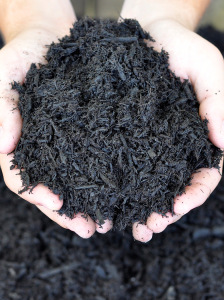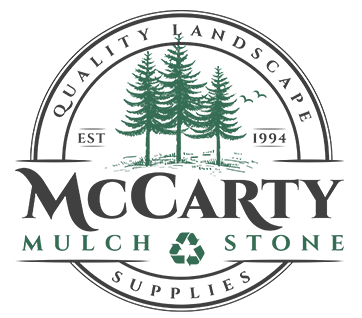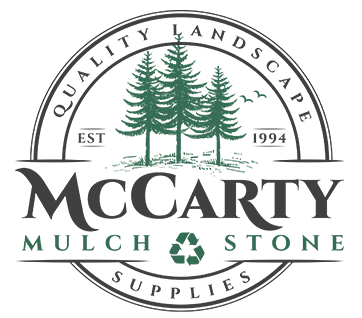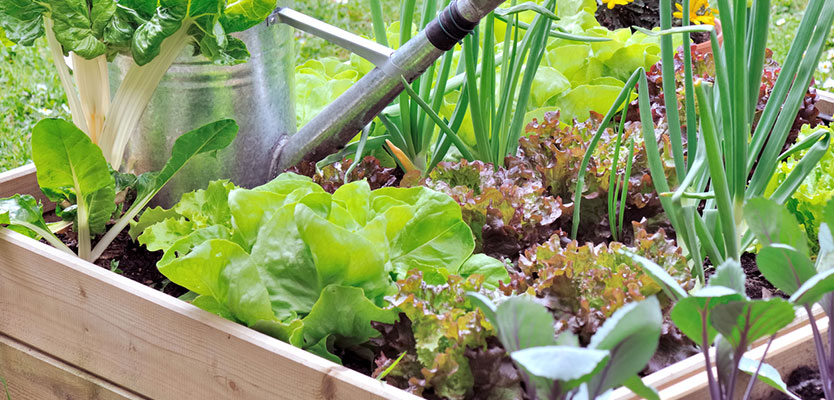What Are the Best Mulches For Your Vegetable Garden?
The Use of Mulch
Using mulch in the vegetable garden has not only become very popular but is almost seen as a necessity due to its benefits. There was an outstanding paper written by a Texas A&M Professor explaining that “A well-mulched garden can yield 50 percent more vegetables than can an un-mulched garden the same size.” Proper mulching can control weeds, conserve moisture, help maintain a consistent temperature within the soil, help prevent disease, and enrich the soil with organic matter. It also makes your garden more physically appealing.
The effects are not always beneficial though; you must consider the type of mulch you use really depends on what effect you want to have which will largely depend on what you are growing. Some potential adverse effects include the growth of fungus or mold, introducing weed seeds, creating a home for insect larvae, and cost, but the benefits seem to outweigh the potential problems.
So, what’s the best mulch for your vegetables?
Generally, those who farm organically use organic mulches which are readily available and typically cost less. There are many types to choose from as well, and as mentioned above, should be chosen based on your needs.
Climate and soil type are two considerations. If you live in a hot, dry area, you will want a mulch that can retain moisture well and keep your soil from overheating such as straw or pine needles. Conversely, If you live where it is cool and wet, you would not want to retain too much moisture as most vegetables perform poorly in wet, heavy soil.
While some vegetables thrive in cooler environments such as most greens, and broccoli, others like tomatoes, peppers, and melons prefer heat. For the heat lovers in a cooler climate, you could benefit from a heat-retaining ground cover like plastic. If you want to stay organic, there are cornstarch-based biodegradable plastic films available. You will want to make sure you have proper irrigation as the plastic will not allow rainwater to permeate, and be sure to recycle if you use regular plastic! For the cooler vegetable types, you can use bark and chipped wood mulches just be sure to use a good compost with it as wood can steal nitrogen from the soil as it breaks down. Don’t be afraid to use wood mulch over the top of plastic also if you are concerned with aesthetics (plastic is ugly).
Pros and cons of the most common vegetable garden mulches.
Bark and chipped wood mulches (organic)
Use a two or three-inch layer for proper weed control. Wood chips decay slower than bark and can leach nitrogen from the soil as it does, so if you use it, monitor the pH level of your soil. Both shredded bark and wood chips are readily available at garden centers or from mulch suppliers like us if you need more than a few small bags. Both can come in a range of colors and sizes to satisfy your aesthetic preferences. The Harvest to Table website recommends allowing wood chips to decompose for a year before using them with nitrogen-enriched soil, and nitrogen should be added before using wood mulch. Wood mulches should be replenished every year to every three years depending on how long it takes to decay. Remember to keep mulch 2 inches away from stems to avoid rot and fungus issues.
Straw (organic)
Straw breaks down quickly, and more will be needed to gain the same benefits as compost or wood mulch. If it is fine-textured, you might need less of it to make a 4-inch layer of mulch after it settles. Straw is a favorite for many vegetable gardeners due to its availability and low cost. Before settling, it should be 6 to 8 inches deep on top of the soil to use as mulch. It is great to cover your vegetable garden’s soil over the winter so by spring you can till the decomposed straw with the soil for structure and nutrients. Dry straw can blow away so you may want to avoid it if you live in a windy area.
Compost (organic)
Compost can be some of the best mulching material for a vegetable garden. If you make your own, it is inexpensive and typically free of weed seeds. Yard waste like grass clippings should be composted first to prevent it from leaching nitrogen from the garden soil during decomposition. Although, don’t be surprised if you see weeds in your vegetable bed a bit later since piles of composting grass clippings are great for wind-blown seeds to take root. For this reason, you should consider using another organic mulch on top of the compost. A better use is to till it into the soil as makes an excellent soil amendment. Be careful with composted manures because they can burn young vegetables if used as mulch since nitrogen content can be very high. It is better if you mix it one part per three of another organic mulch before using it.
Plastic (organic if you use the cornstarch-based biodegradable plastic film)
Plastic can be very effective as a mulch when appropriately used. Black plastic in the spring warms the soil by up to 8°F which is excellent for tomatoes, though it may raise soil temperatures too much in mid-summer which could damage plant roots. A great way to prevent this is to make sure you have a good dense foliage cover, or you can cover it with another organic mulch like wood mulch to avoid direct absorption of sunlight. It also blocks light from the soil which discourages weeds. Clear plastic can warm the soil better than black, but since it does not block the light, weeds can grow beneath it. Gardeners can use different colored plastic films as the different colors can have various effects depending on the plant. Organic gardening standards will allow the use of non-organic plastic films on the condition they are gathered at the end of the growing season since they are not biodegradable.
Monitor the soil beneath the plastic to ensure it stays moist and cut holes if water is not getting through. Another plastic on the market is porous which allows water to penetrate and the soil to aerate.
More about the benefit of different colors:
- Black. Does well-controlling weeds and warms the soil in the spring by up to 8 degrees Fahrenheit.
- Brown. Works just like black mulch but looks better.
- Red. Reflects far-red rays from the sunlight back onto plants, which improves the production of tomatoes by up to ten to thirty percent.
- Green. Improves performance of melons and squash in climates with cooler summers.
- Silver. Deters harmful insects such as flea beetles and thrips nervous and reflects more sunlight back onto the plant.
- White. Weed control without soil warming, so it is great for hot summer climates.
- Clear. Allows infrared light to pass so it raises soil temp for early spring planting more than black plastic but doesn’t control weeds as well.
Still don’t know which mulch is best for you?
With all the variables to consider:
- Climate
- Soil
- Type of plants
- Availability
- Cost
- Aesthetics
Sometimes the best way to find out the best answer is simply trial and error, but we hope our guide gets you started in the right direction!




